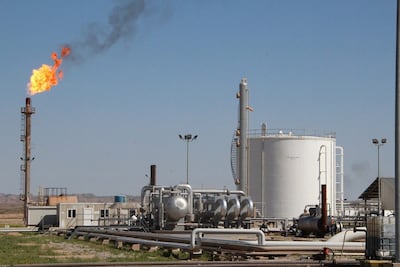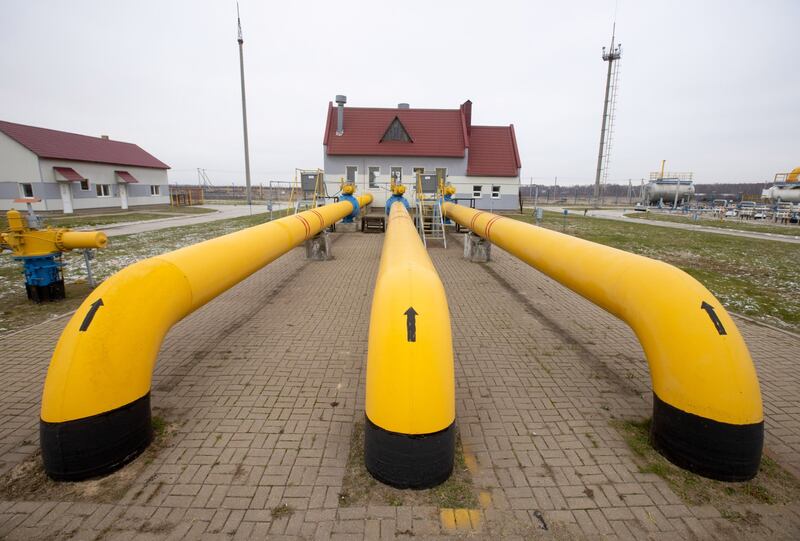Global demand for gas is robust and will continue to grow, driven by demand from Asia and Europe, according to a top oil and gas executive.
“Gas demand in both Europe and Asia, the world's two largest gas importing regions has surged upwards,” Patrick Allman-Ward, chief executive of Dana Gas told the S&P Global Platt’s Middle East Executive Petroleum Conference on Tuesday.
“Overall Asian gas demand has continued to grow rapidly by 40 per cent over the past five years from 2015 to 2020, with China as the fastest-growing element at 75 per cent. Even the European demand has grown although at a more modest rate of 6 per cent.”
Demand for gas has surged in recent years as large, energy consuming nations, including China and India, wean themselves off dirtier coal to protect the environment.
Long-term demand for liquefied natural gas is expected to double to 700 million tonnes by 2040 as the world consumes more gas to offset polluting fuels such as coal, Anglo-Dutch major Shell said in an annual outlook last year.
Global gas demand from 2001 and 2020 has increased by 80 per cent from 2,500 BCM (billion cubic metres) per year to just under 4,500 BCM per year and the share of imported gas rose 125 per cent to 1244 BCM, Mr Allman-Ward said.
The number of gas-importing countries has also jumped from 12 to 43 during the period as demand for clean fuel rose.
“In both Europe and Asia, LNG is the fastest-growing segment in both markets. In Europe, domestic production has shrunk by nearly 20 per cent over the past five years, whereas imported gas has increased by nearly 40 per cent, of which LNG is by far the dominant growth component," he said.
“In Asia, as we've seen, gas demand has increased dramatically. In contrast to Europe, domestic production has increased by 40 per cent, as has the growth in imported gas supplies, again with LNG as the fastest-growing segment,"
However, strong LNG demand growth has not been met by investments in production capacity and the coronavirus pandemic “has been the latest event to depress investment levels" further, according to Mr Allman-Ward.
“The consequence is obviously going to be a supply/demand imbalance, which has happened as a result of a number of different reasons rather dramatically already this year.”
He expects the tightness in the energy markets to continue for “much of a decade unless new investments appear soon from somewhere”.

The price of natural gas has increased by more than 40 per cent since the start of the year to trade at $3.68 per million British thermal units at 5.20pm UAE time on Tuesday, on the back of higher demand.
Middle East demand for gas also jumped 150 per cent over the past 20 years with 88 per cent of demand growth coming from Saudi Arabia, the UAE, Oman, Iraq and Kuwait, primarily for power generation as well as a feedstock for petrochemicals, according to Mr Allman-Ward.
“LNG may continue to grow in importance if the region is serious about its net-zero ambitions and seeks to end the use of oil in power generation,” he said.
“Substituting oil for power would require about 35 billion cubic metres per annum of additional gas as an alternative feedstock, which would be an increase of 12 per cent of current gas demand.”
The UAE relies on imports to meet its gas needs and growing demand for cleaner fuel to generate electricity and power industry.
However, it aims to boost production. This month, Abu Dhabi National Oil Company announced a "significant" increase in national reserves of 4 billion stock-tank barrels (STB) of oil and 16 trillion standard cubic feet of natural gas.
These additional reserves increase the UAE’s hydrocarbon reserves base to 111 billion barrels of oil and 289 trillion scf of natural gas.







